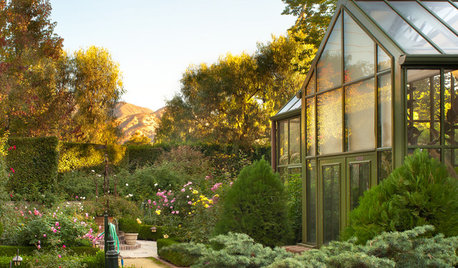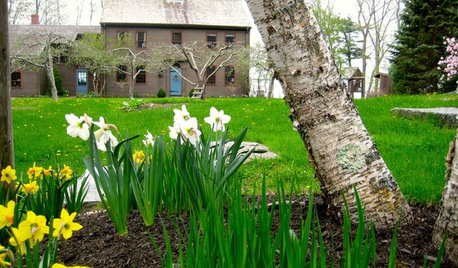Cold temps. & fruit trees
Michael
13 years ago
Related Stories

FARM YOUR YARDIf You Have Room for Only One Fruit Tree ...
Juice up a small garden with one of these easier-care or worth-the-effort fruit trees for a mild climate
Full Story
EDIBLE GARDENSHow to Grow 10 Favorite Fruit Trees at Home
Plant a mini orchard in fall, winter or early spring to enjoy fresh-off-the-tree fruit the following year
Full Story
EDIBLE GARDENSGrow Plum Hybrids for Your Favorite Fruit Flavors
Plums are cozying up with apricots, peaches and even cherries — here’s how to grow these hybrids for the best aspects of each
Full Story
MOST POPULARHow to Get Rid of Those Pesky Summer Fruit Flies
Learn what fruit flies are, how to prevent them and how to get rid of them in your home
Full Story
GARDENING GUIDESHow to Keep Your Citrus Trees Well Fed and Healthy
Ripe for some citrus fertilizer know-how? This mini guide will help your lemon, orange and grapefruit trees flourish
Full Story
GREENHOUSESGreenhouses Bring Gardens in From the Cold
Get a jump start on summer plantings even if spring chills linger with a greenhouse or cold frames in your backyard
Full Story
WORLD OF DESIGNWorld of Design: These Gardeners Dig Cold Climates
Passionate gardeners in Maine, Russia and northern Sweden know how to get the most from their short growing seasons and freezing conditions
Full Story
FALL GARDENING5 Fall Fruits You Can Grow in Containers
Brighten your porch or patio with a potted pomegranate, kumquat, blueberry bush or another great fall fruit
Full Story
Fruit Displays Sweeten Summer Interiors
Eating the rainbow takes on a new meaning in these seasonally inspired fresh fruit accents
Full Story
ENTERTAININGEye-Catching Centerpieces Beyond Flowers and Fruit
Use your imagination to create a tableau that reflects your surroundings, creates dramatic tension or elicits surprise
Full Story


fruitnut Z7 4500ft SW TX
alan haigh
Related Professionals
Baltimore Landscape Architects & Landscape Designers · Birmingham Landscape Architects & Landscape Designers · Essex Landscape Architects & Landscape Designers · La Marque Landscape Architects & Landscape Designers · Mitchellville Landscape Architects & Landscape Designers · Anderson Landscape Contractors · Billerica Landscape Contractors · Dudley Landscape Contractors · Hickory Hills Landscape Contractors · Hicksville Landscape Contractors · Lyndhurst Landscape Contractors · Pahrump Landscape Contractors · Roseville Landscape Contractors · Seymour Landscape Contractors · South Hackensack Landscape Contractorsfranktank232
olpea
ottawan_z5a
donnieappleseed
fruitnut Z7 4500ft SW TX
donnieappleseed